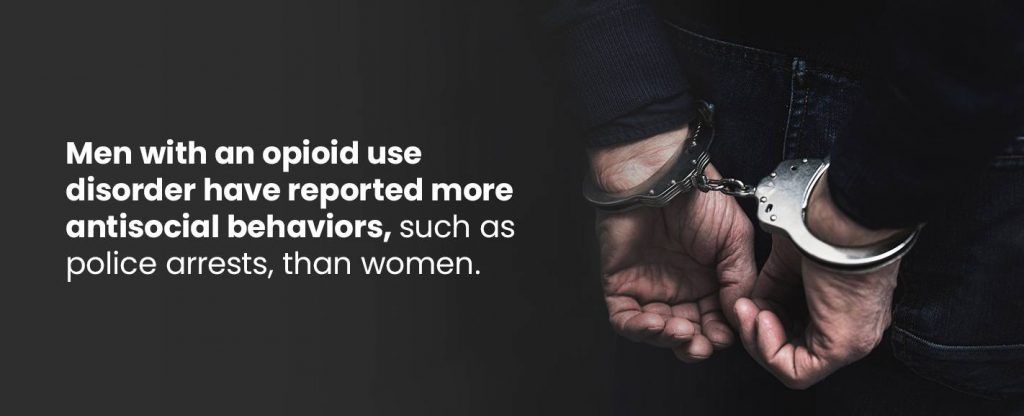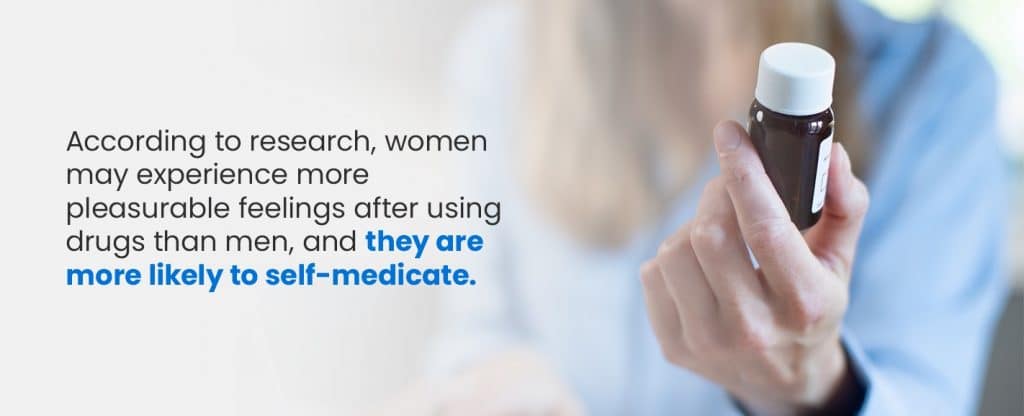Opioid addiction is a chronic disease that can lead to life-threatening situations, such as an overdose. According to the American Medical Association, current trends in opioid addiction show an increase in mortality in more than 40 states. In 2018, 32,078 men died from opioid overdose in the United States, while 14,724 women succumbed to the disease.
Men and women are both susceptible to opioid addiction, but the disease affects them differently due to interactions among biological, environmental, developmental and sociological factors. For example, according to the National Institute on Drug Abuse, research has shown that women use and respond to drugs differently than men, and they face unique obstacles to treatment. Therefore, men and women have different treatment needs.
In this post, we’ll explore the differences between men and women when it comes to opioid addiction and how a treatment program should address these differences, as well as the similarities.

Opioid Addiction Among Men
Researchers have noted differences in addiction-like behavior between men and women, which may be influenced by biological factors, social roles and environmental experiences. For example, men are more likely to take drugs and engage in risky behavior to belong to a group than women. Throughout most of American history, men were much more likely to drink alcohol and use illicit drugs than women, while women were often prescribed drugs as medicine. Today, adolescent males and females use illegal drugs in an equal number.
Both men and women are at increased risk of developing a mental and substance use disorder if they experienced childhood trauma, such as abuse or neglect. However, according to a study published in International Psychogeriatrics, the association between childhood abuse, neglect or parental separation, and mental and substance use disorders was stronger among men. Post-traumatic stress disorder (PTSD) can also increase the chance of a progressing substance use disorder. Men with PTSD are almost twice as likely to also have a substance use disorder as women.
Other differences between men and women regarding substance abuse include:
- Men are more likely to inject heroin than women.
- Men are more likely to die from a drug overdose than women or end up in the emergency room.
- For most age groups, men have higher rates of dependence on illicit drugs or alcohol than women.
- Men with an opioid use disorder have reported more antisocial behaviors, such as police arrests, than women.
Although men are more likely to use illicit drugs or die from an overdose, they may be less susceptible to cravings and relapse than women once they enter recovery. Men also tend to receive more support at work and in their relationships during their recovery from addiction, and they are more likely than women to seek treatment for a substance use disorder in the first place.
Lastly, for reasons unknown, men are nearly three times more likely than women to receive naloxone in an emergency situation. Naloxone is a medication used to reverse the effects of an opioid overdose.

Opioid Addiction Among Women
Women face unique challenges when it comes to addiction. First, women take a different path to addiction than men. According to research, women may experience more pleasurable feelings after using drugs than men, and they are more likely to self-medicate. Women at risk of developing substance use disorders also become addicted faster than men and maintain their addiction at higher doses. As mentioned above, women are also less likely to seek treatment and more likely to relapse than men. Part of this may be because women receive greater stigma than men for being addicted and receive less social support.
Women who misuse opioids or other substances may also have issues relating to menstrual cycles, pregnancy and menopause. For example, opioid misuse during pregnancy is particularly risky, potentially harming the women’s health and the health of her unborn child. Since pregnant women may be reported to child protective services for illicit drug use depending on the state, they may refrain from treatment to avoid involvement with the criminal justice system and potentially losing custody of their child.
Women also report unique reasons for using drugs, such as weight control, pain management and self-medicating for mental health problems. Other differences between men and women include:
- Women are more likely to experience chronic pain and use prescription opioid medications longer and at higher doses than men.
- Psychological and emotional distress has been identified as a risk factor for opioid abuse for women, but not for men.
- Women may face additional barriers to treatment for a substance use disorder, such as lack of child care.
- Women are more likely to be influenced by drug-using partners than men.
- Women are more likely than men to have a history of trauma, which can lead to substance abuse.
Regarding treatment, women are more likely to experience economic barriers than men or feel embarrassed for being in treatment. Women who have children may drop out of treatment early because they do not have anyone to care for their children. Additionally, since many treatment programs have been developed to serve men, women are less likely to enter traditional treatment.
How Men and Women Can Be Treated Differently and the Same
Both men and women with opioid addiction can get on the road to recovery, though it may take slightly different routes to get there. Since men and women often face various challenges overcoming addiction, their treatment program must address their unique needs.
For example, according to the Office on Women’s Health, about 70% of women who enter treatment for a substance use disorder have children. However, many of these programs do not offer child care on-site, so many women feel torn between caring for their children and getting the help they need. Since many women place a high value on their relationships and family, treatment programs should focus on promoting healthy relationships and providing child care services in addition to addressing addiction. Women may also experience more intense withdrawal than men, which should be considered by treatment professionals.
Regardless of sex or gender, individuals with addiction need treatment that addresses their needs on a holistic level. Since both men and women with opioid addiction are more likely to have experienced childhood trauma than the general population, treatment should include individual counseling to safely address issues that affect their well-being. Medication-assisted treatment (MAT) is another critical part of treating opioid addiction because it eases cravings and withdrawal symptoms. When combined with counseling, MAT is an effective, comprehensive approach to opioid use disorders.
You’re an Individual at AppleGate Recovery
At AppleGate Recovery, we understand that men and women are individuals with unique needs. We offer office-based opioid treatment (OBOT) to provide medication-assisted treatment, individual counseling and other supportive recovery services to men and women. OBOT is meant to fit into your schedule, allowing you to get the help you need while living your life.
Regardless of your sex, gender or background, we want to help you create and reach individual recovery goals by minimizing treatment barriers. If you or a loved one struggles with opioid addiction, help and hope are waiting for you. Contact us today to take the first step.

Contact AppleGate Recovery Today
If opioid addiction is impacting your life or the life of someone you care about, reach out to our treatment center. We are here to provide the support and care you need to take the first step toward recovery.
Call 888.488.5337
